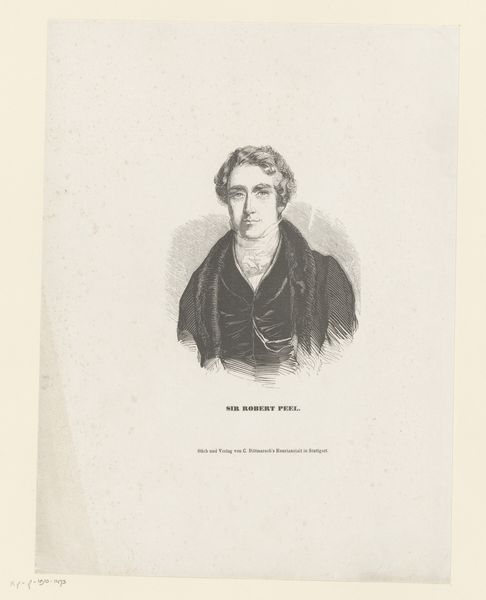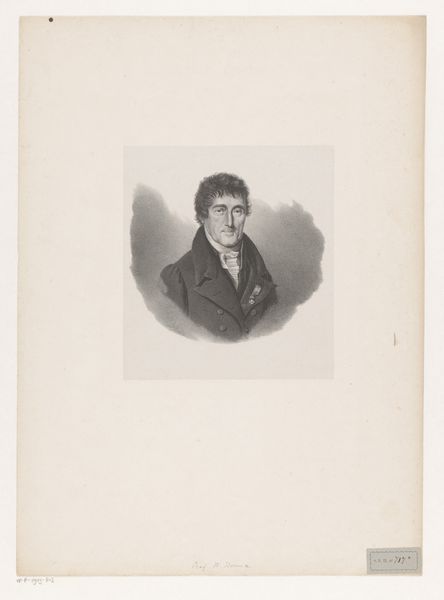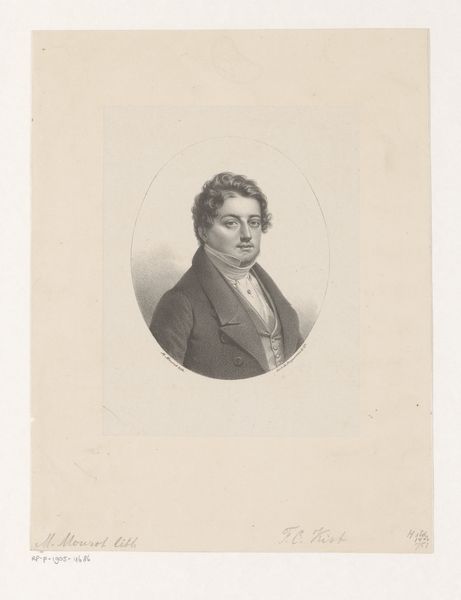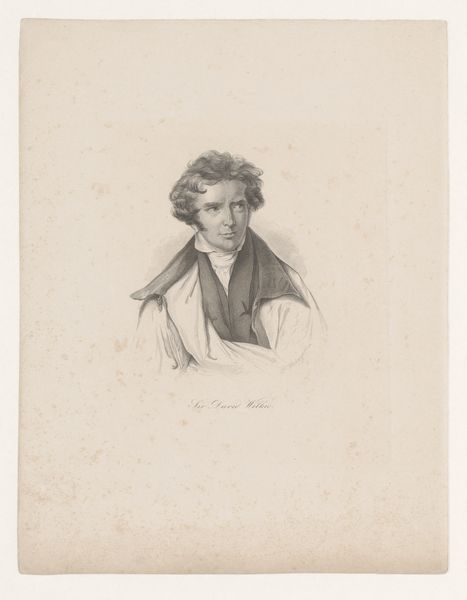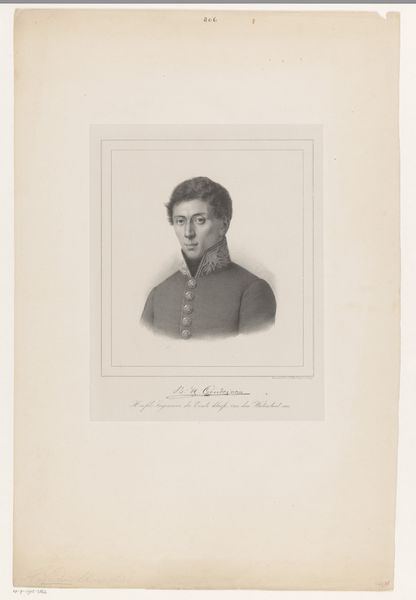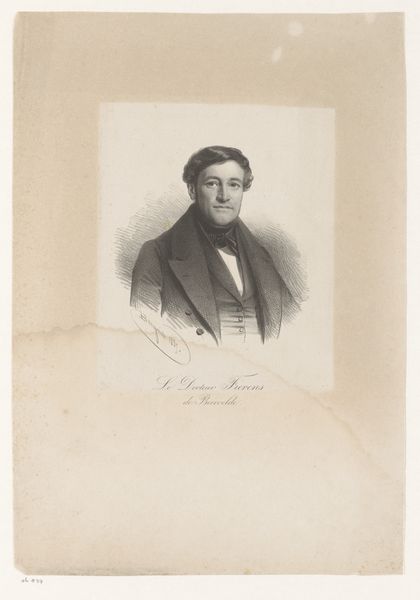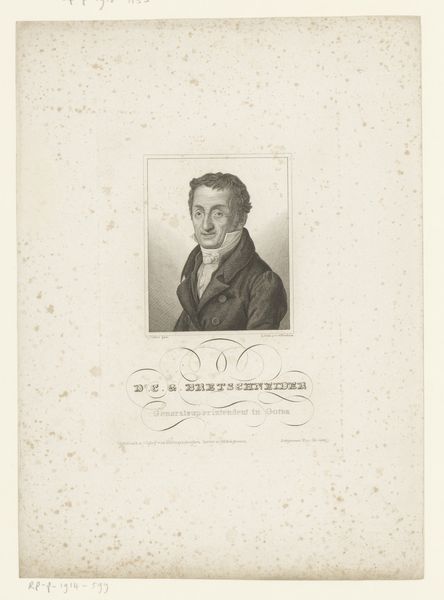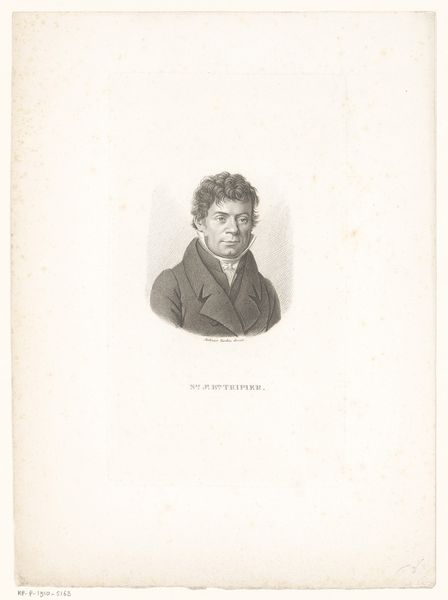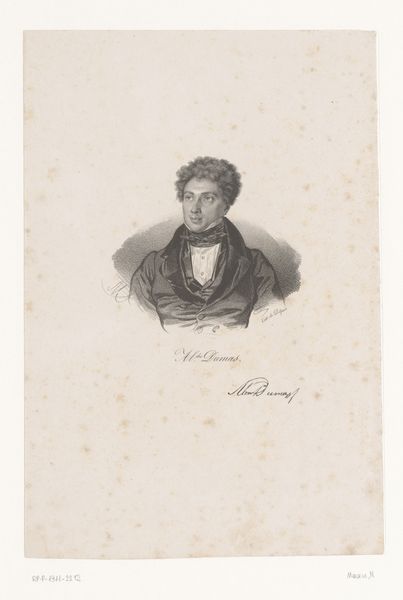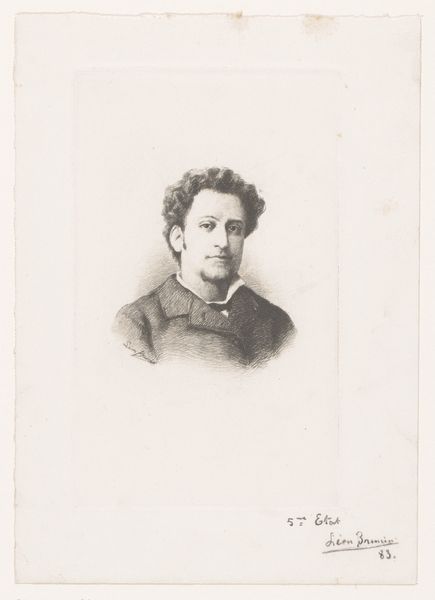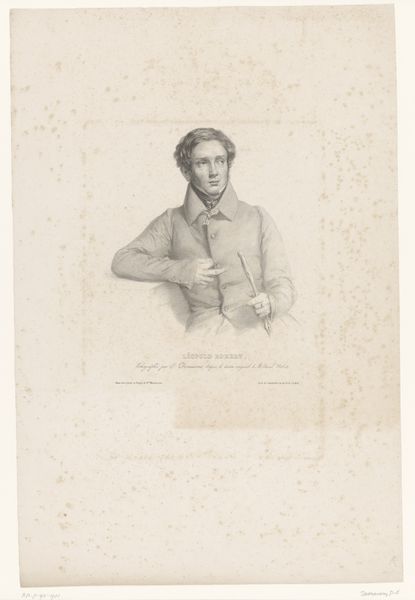
Portret van een onbekende man met drie opengeslagen boeken 1806 - 1877
0:00
0:00
drawing, pencil
#
portrait
#
drawing
#
caricature
#
pencil drawing
#
pencil
#
history-painting
Dimensions: height 310 mm, width 238 mm
Copyright: Rijks Museum: Open Domain
Curator: I'm struck by the fragility of this work. There's such a delicacy in the pencil strokes, it's almost ethereal. Editor: Agreed. Its sketch-like quality hints at process, doesn't it? The rough paper too; you can imagine Jean-Baptiste Madou working quickly, perhaps capturing a fleeting impression of his sitter. This piece, "Portrait of an Unknown Man with Three Open Books", from the 19th century, between 1806-1877, really showcases the materiality of drawing itself. Curator: The arrangement is compelling. The books below him create an almost cloud-like effect, elevating him above the material world, hinting at intellectual pursuits. Note the precise rendering of his gaze—a very specific capturing of emotion and intention through formal means. Editor: Precisely, those books also suggest labor and knowledge creation. What's the man doing? Perhaps the inscription offers a clue? The labor of learning itself is foregrounded through those sketched open pages, even though we are distanced from knowing their actual content. Curator: Indeed. The lack of color focuses attention on the composition and the play of light and shadow across his face, highlighting the expressiveness that is so essential to successful portraiture. Look at how he captures volume with just pencil. Editor: Absolutely. But I also see a critique embedded in this medium and style choice. Pencil drawing would have been regarded with far less esteem at the time than painting. Madou might be making a quiet point about the relative value afforded different kinds of artistic labor. Curator: Interesting. It truly is a composition of opposing concepts: the ethereal quality is juxtaposed against a more grounded intellectual symbolism of the material. It really highlights the importance of careful observation and draughtsmanship in capturing not just a likeness, but also an essence. Editor: Yes. It's a dance between the artist's hand, the paper’s grain, the sitter’s likeness, and broader cultural valuation. It pushes beyond surface appeal to reflect more deeply on what drawing signifies. Curator: Thank you for the analysis. It has allowed me to appreciate the work more! Editor: The same for me, indeed.
Comments
No comments
Be the first to comment and join the conversation on the ultimate creative platform.
